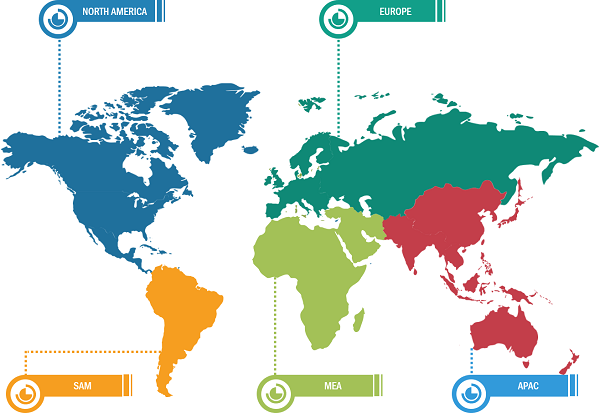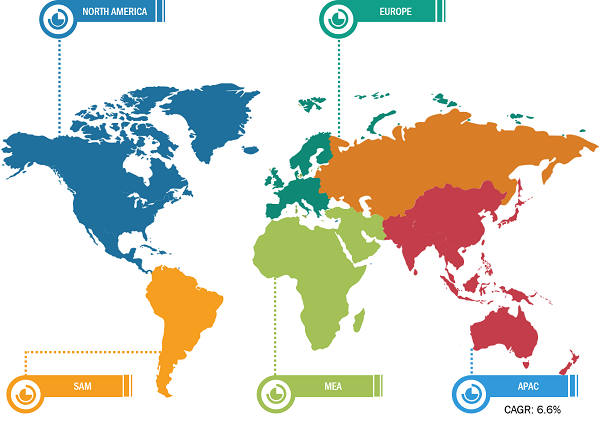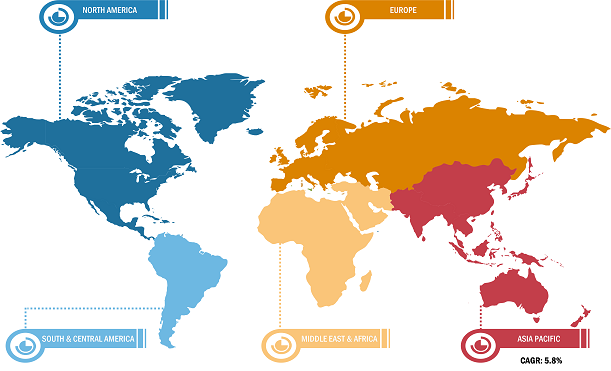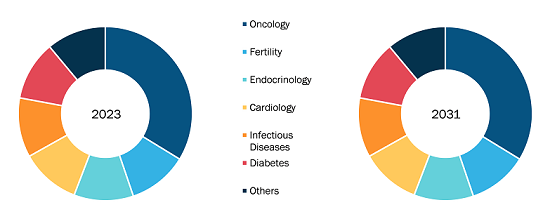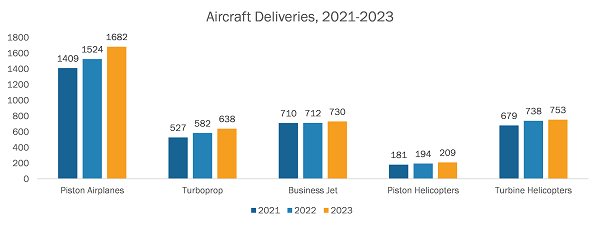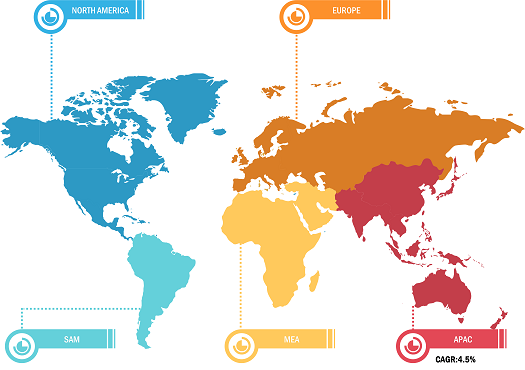
Chlorine Market
In 2022, Asia Pacific accounted for the largest portion of the global chlorine market share. With an increasing population and a shift of people from rural to urban areas, there is a rising need for construction materials, particularly PVC and its derivatives. In the construction industry, PVC is used to manufacture pipes, fittings, cables, and other building products. Chlorine is a fundamental raw material in PVC production. Therefore, the booming construction industry to accommodate the urban population’s needs is expected to intensify the demand for chlorine-based materials, contributing to the chlorine market growth. The robust manufacturing sector in Asia Pacific also drives the demand for chlorine.
Increasing Demand for Chlorine from Water and Wastewater Treatment Sector Propels Chlorine Market Growth
In recent years, the chlorine demand has steadily increased from the water and wastewater treatment industry due to several factors crucial for maintaining public health and environmental sustainability. The growing global population is leading to increased water consumption and wastewater generation, which puts immense pressure on water resources. As urbanization and industrialization continue to expand, the need to treat larger volumes of water and wastewater becomes paramount. Chlorine in various forms such as chlorine gas, sodium hypochlorite, or calcium hypochlorite is recognized as an effective disinfectant. It effectively eliminates harmful pathogens, bacteria, and viruses from water that can pose significant health risks if left untreated. Thus, chlorine is considered a crucial cost-effective solution to treat large quantities of water to ensure the delivery of safe and clean drinking water to millions of people across the world.

Chlorine Market: Segmental Overview
Based on application, the chlorine market is segmented into ethylene dichloride/polyvinylchloride production, chloromethanes, isocyanates & oxygenates, solvents, and others. The ethylene dichloride/polyvinylchloride production segment held the largest share of the chlorine market in 2022. The isocyanates & oxygenates segment is expected to record the highest CAGR from 2022 to 2030. Ethylene dichloride is used as a solvent and chemical intermediate in other organic chemical compounds. The presence of chlorine makes polyvinyl chloride versatile and compatible with other materials. In addition, chlorine makes PVC flame retardant and helps PVC be distinguished when sorting plastics for recycling. Due to all these factors, the ethylene dichloride/polyvinylchloride production segment dominates the chlorine market.
Based on end-use industry, the chlorine market is segmented into water treatment, chemicals, pulp & paper, plastics, pharmaceuticals, and others. The plastics segment held the largest market share in 2022. The production of PVC involves the polymerization of vinyl chloride monomers, and chlorine is a key raw material in this chemical process. The construction and infrastructure development is growing substantially. PVC pipes, fittings, and profiles are extensively used in construction due to their durability, cost-effectiveness, and versatility. As urbanization continues to accelerate in many parts of the world, the demand for PVC-based construction materials rises in tandem, leading to a high need for chlorine to meet the polymerization requirements. PVC’s lightweight nature, ease of processing, and cost-efficiency have made it a preferred choice for manufacturing automotive parts such as dashboards, door panels, and wiring covers. Therefore, the growth of the automotive sector propels the demand for PVC, which bolsters the requirement for chlorine as a raw material in PVC production. Due to all these factors, the plastics segment dominates the chlorine market.
Impact of COVID-19 Pandemic on Chlorine Market
Before the COVID-19 pandemic, the chlorine market was mainly driven by the increasing use of chlorine in PVC manufacturing and in the water & wastewater, pharmaceutical, and chemicals sectors. However, due to the pandemic, governments of various countries across the globe imposed country-wide lockdowns that directly impacted the growth of the industrial sector. The shutdown of production facilities negatively impacted the chlorine market growth in 2020. The disruptions in the supply chain of chlorine resulted in increased costs of chlorine in different regions. However, with the ease of lockdown measures, various industries regained momentum, which increased the demand for chlorine. Further, many economies began reviving with the resumption of operations in different sectors in 2021. As a result, the chlorine market is growing with the rise in demand from various sectors.
Chlorine Market: Competitive Landscape and Key Developments
Aditya Birla Chemicals India Ltd, BASF SE, Ercros SA, Hanwha Solutions Corp, INEOS Group Holdings SA, Occidental Petroleum Corp, Olin Corp, Tata Chemicals Ltd, Vynova Belgium NV, and Sumitomo Chemical Co Ltd are among the players operating in the global chlorine market. The global chlorine market players focus on providing high-quality products to fulfill customer demand.
Key Developments
- In March 2023, BASF SE Monomers division received the first ISCC+ certification in Asia-Pacific to expand its portfolio of sustainable products in the region. The attainment of the certificates underlines the division’s determination to help customers reach their individual sustainability targets.
- In July 2021, Olin Corp entered into an agreement with ASHTA Chemicals, Inc. to purchase and sell the chlorine produced at ASHTA Chemicals. This agreement provided the opportunity to optimize logistics across Olin Corp and ASHTA Chemicals’ portfolio.

